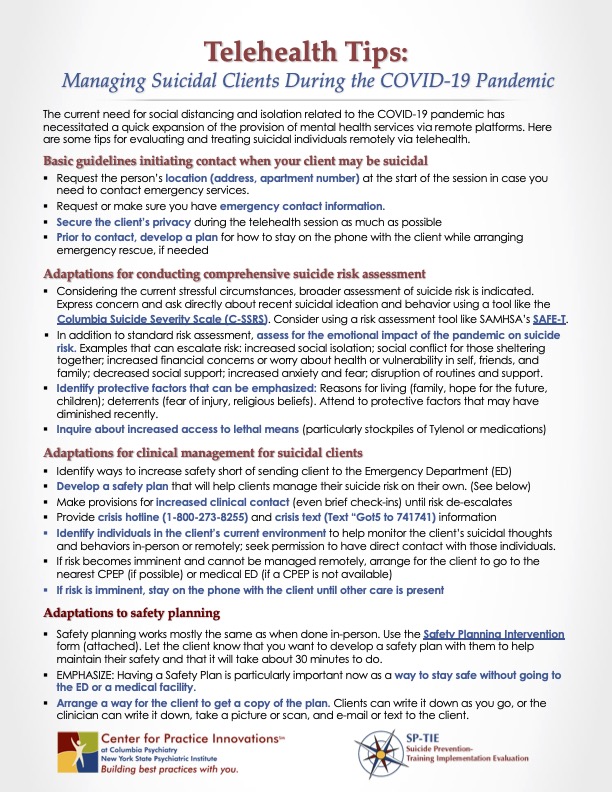Patient Guide to Starting Buprenorphine
This one-page handout will help patients understand when they will start buprenorphine, based on the last time they used opioids and their current level of symptoms. It describes how to take buprenorphine in order for it to help with cravings and withdrawal symptoms, what dose of medication to take when starting and afterwards, and other important information about buprenorphine.Integration During Pregnancy-With an emphasis on Pregnant People Who Are Using Drugs
This short take talks about the added importance of building trust and integrating culturally and linguistically evidence-informed social, physical and behavioral health services during pregnancy. The short take place particular emphasis on pregnant people who use drugs because historically stigma, racism and other isms have often meant their care has not been clinically appropriate.Clinical Guidance for Treating Pregnant & Parenting Women With Opioid Use Disorder & Their Infants
This Clinical Guide provides comprehensive, national guidance for optimal management of pregnant and parenting women with opioid use disorder and their infants. The Clinical Guide helps healthcare professionals and patients determine the most clinically appropriate action for a particular situation and informs individualized treatment decisions.Well-Being & Resilience for Health Care Professionals
Through the Action Collaborative on Clinician Well-Being and Resilience, the National Academy of Medicine argues that patient well-being is predicated on the clinician-patient relationship. The clinician’s well-being will highly influence the clinical encounter. The research base points to organizational and practice environment factors (among others) on the system side of the equation and personal factors, skills and abilities, on the clinician side of the equation for optimal clinician resilience. The past two years of clinical teams working under extraordinary COVID-19 circumstances have taken a heavy toll on clinician resilience and well-being, not to mention on resulting quality and safety of care. This presentation explores the National Academy of Medicine model, focusing on clinician factors in well-being. Together, in an experiential and participatory presentation, we will examine the areas of meaningful and sustaining practice and collaborative and mindful practice. Participants will leave this training with tangible tools to navigate resilience through mindfulness, gratitude, decreased cynicism and enhanced connectivity. This presentation is built on both humanities and deepened human connections between healers.Stress Management: Imagery
This short take video demonstrates how to teach and use guided imagery with your patients/clients for stress management. Guided imagery leverages the mind-body connection to efficiently relax the body through the use of imagination.Stress Management: Progressive Muscle Relaxation
This short take video is a demonstration of how to use progressive muscle relaxation as a strategy for stress reduction with your patients/clients. This technique for relaxation was developed in the 1920s by Dr. Edmund Jacobson. This technique has been now used for decades to address stress, anxiety, and depression and is used proactively as a strategy to maintain positive mental health and improve quality of life as demonstrated in studies.Stress Management: Deep Breathing/Diaphragmatic Breathing
This short take video demonstrates how to teach deep breathing techniques to a patient/client as a strategy for stress management. Abdominal breathing is the term often used to describe this breathing technique. The term belly breathing is often used with pediatric patients/clients. Breathing exercises can help individuals with stress or anxiety disorders. Abdominal breathing can mitigate hyperarousal in the body when under stress and help to focus the mind.Deepening Therapeutic Engagement in the Virtual Space
This hour-long presentation will briefly review the empirical evidence on the appropriate use of telebehavioral health and the clinical approaches that have been demonstrated to be effective and/or ineffective. The majority of the presentation will cover the clinical strategies for preparing the clinician for the telehealth visit, including assuring safety, anticipating problems, and engaging the member effectively when on the phone and when on video.
Strategies for Consumer Engagement in Telehealth
This session focuses on patient engagement using telehealth kiosks; learning and discussing applications to your practice. The session was held live during Telehealth in a Post-Pandemic Era: Sustainable Approaches to Support Integrated Care – Part 2, held on September 29, 2021.
Addressing Crisis and Risk During a Telehealth Visit – Case Based Workshop Discussion
This session focuses on telehealth best practices; caring for patients via telehealth who have suicidal ideations and other urgent issues. The session was held live during Telehealth in a Post-Pandemic Era: Sustainable Approaches to Support Integrated Care – Part 2, held on September 29, 2021.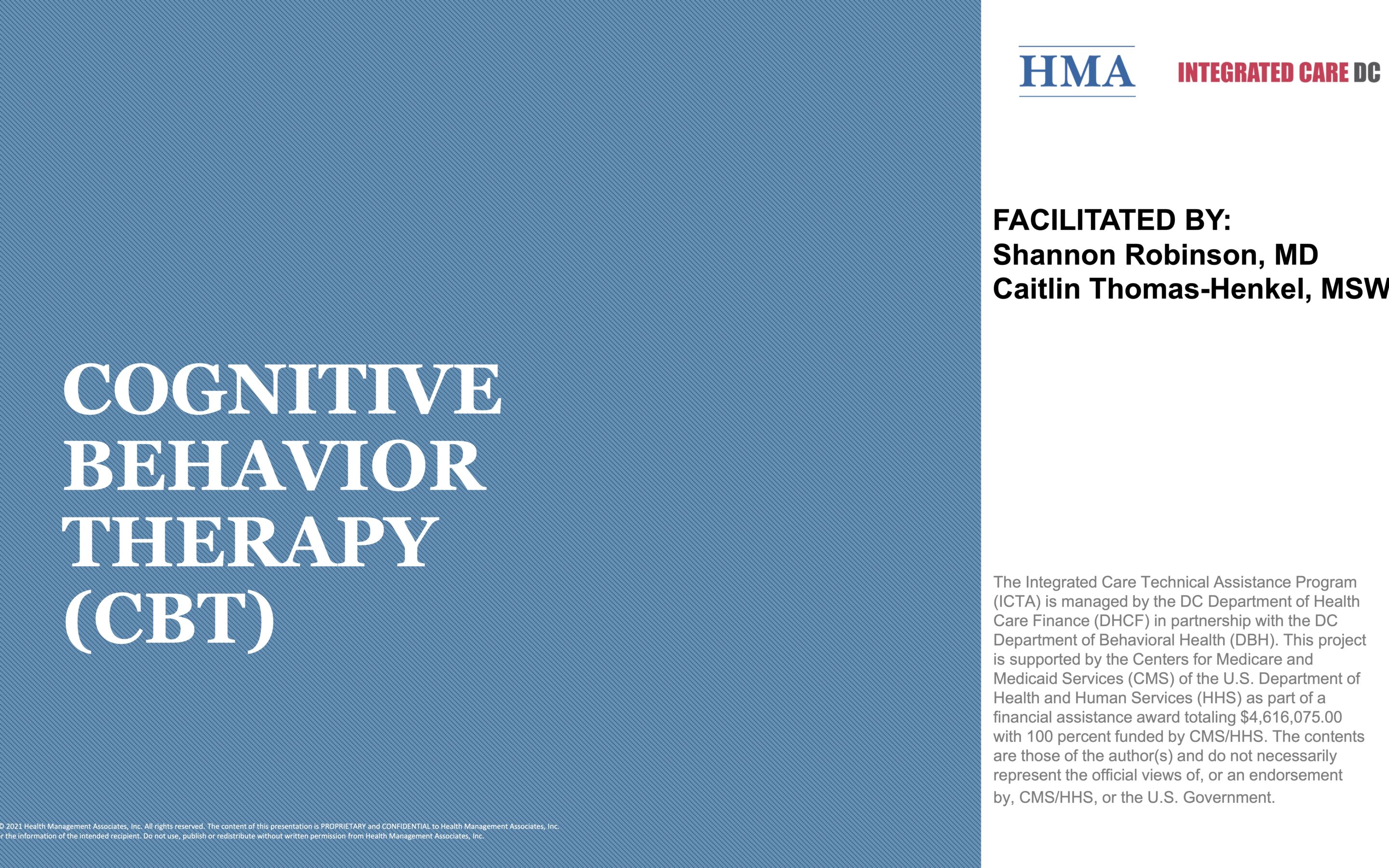
Cognitive Behavior Therapy (CBT)
Cognitive Behavioral Therapy (CBT) is a type of psychotherapeutic treatment that helps people learn how to identify and change maladaptive thought patterns that have a negative influence on behavior and emotions. This short take video will cover the key principles of CBT and a few basic techniques that are utilized for various conditions.Problem Solving Treatment & Tools
Problem Solving Therapy (PST) provides tools to help individuals identify and solve problems that can have a negative impact on their day-to-day lives. PST improves an individual's overall quality of life, treats depression and other conditions. It is based on a model that considers the importance of real-life problem-solving, including managing life stressors when they arise. This short take video covers the fundamental principles of PST and the tools to use in everyday life.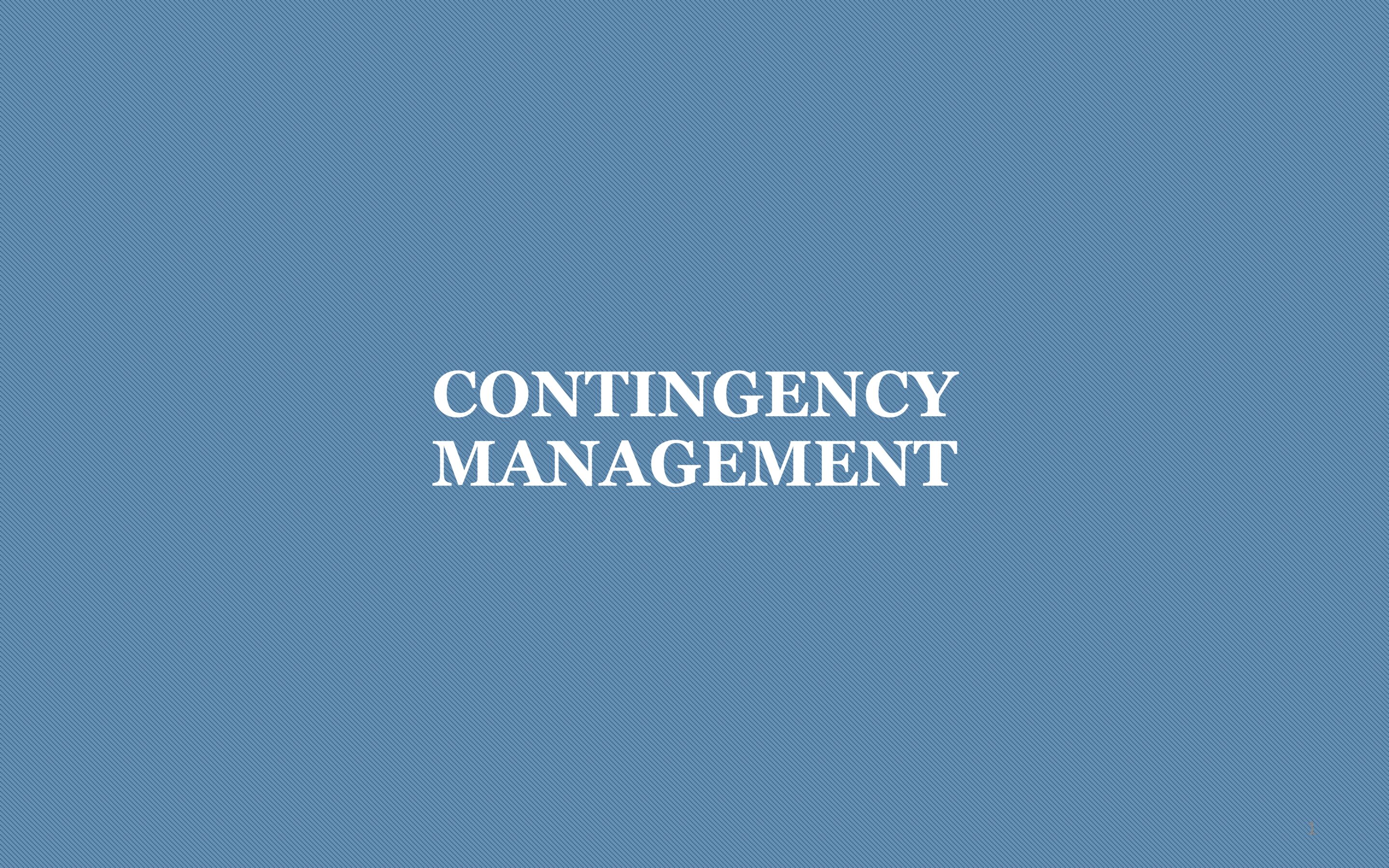
Contingency Management: Underutilized Evidence Based Treatment
Contingency management is an evidence-based treatment plan for substance use disorder. This type of treatment, a major topic in media and public policy circles, promotes behavior change and reinforces positive behaviors. This short take video discusses contingency management treatment in more detail and how to increase its use in more practices.Coping Skills for Trauma: Getting Into The Body
There are a variety of strategies and interventions to help individuals cope with the impact of trauma on their wellness and functioning. Many evidence-based treatments and promising treatments involve the teaching and use of skills to help the individual cope with trauma. One category of those skills is helping individuals to connect and get grounded in their body as a way to cope with and manage affect dysregulation, intrusive thoughts and imagery, distress and dissociation. Many new treatments for PTSD and trauma-related disorders are emerging that are focused primarily on working with the body to bring about relief. "Getting into the body" skills can be integrated into treatment for PTSD and trauma-related disorders or used in a consultation model to build mastery with the individual and support functional restoration.Coping Skills for Trauma: Experiencing Emotions
There are a variety of strategies and interventions to help individuals cope with the impact of trauma on their wellness and functioning. Many evidence-based treatments and promising treatments involve the teaching and use of skills to help the individual cope with trauma. One category of those skills is helping individuals to connect with and experience their emotions a way to cope with and manage affect dysregulation, intrusive thoughts and imagery, distress and dissociation. "Experiencing emotion" skills can be integrated into treatment for PTSD and trauma-related disorders or used in a consultation model to build mastery with the individual and support functional restoration.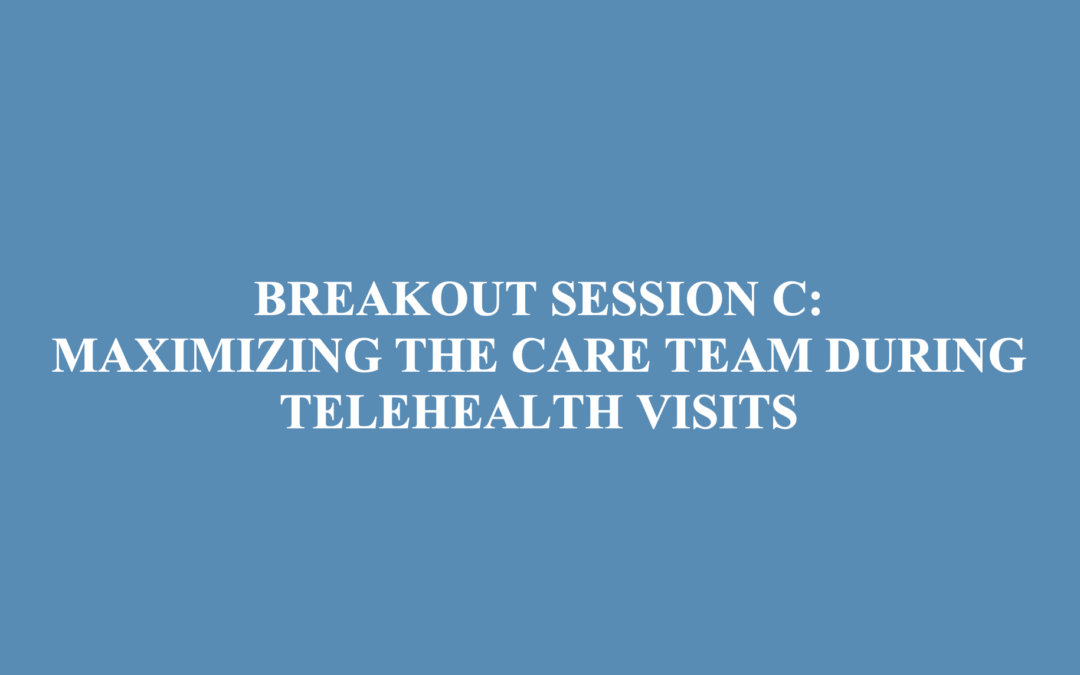
Maximizing the Care Team During Virtual Visits
This session focuses on learning and applying new virtual workflow strategies to engage your entire care team. The session was held live during Telehealth in a Post-Pandemic Era: Sustainable Approaches to Support Integrated Care – Part 2, held on September 29, 2021.Evidence Based Practices Workshop 3 Problem Solving Therapy
Problem-Solving Therapy (PST) is a form of therapy that provides people with tools to identify and solve problems that arise from life stressors that can have a negative impact on their day-to-day lives. Its aim is to improve individuals’ overall quality of life and can be used to treat depression, among other conditions. It is based on a model that takes into account the importance of real-life problem-solving including how to manage real-life stressors when they arise. The presentation will cover key PST principles and tools that can be used in everyday life.Evidence Based Practices Workshop 2 Behavioral Interventions for Stress Management
There are many evidence-based techniques that are easy to learn and practice, with good results in individuals struggling with physical and mental health challenges. This workshop with briefly introduce participants to some of the more common and effective practices including progressive muscle relaxation, guided imagery, diaphragmatic breathing, relaxation response, and mindfulness-based stress reduction. Speakers: Shannon Robinson, MD (HMA), Marsha Johnson, MSW, LCSW (HMA)Problem Solving Worksheet
This worksheet guides the clinician and person receiving services in following the seven steps of problem-solving: Identifying the problem Describing the goal Brainstorming solutions Evaluating the pros and cons for each potential solution Choosing the preferred solution Creating a detailed action plan Evaluating the outcome.Relaxation Handout
This patient-facing handout reviews basic steps for meditation, deep breathing, progressive muscle relaxation, and imagery. This can be used when explaining stress reduction techniques to patients.Evidence Based Practices Workshop 1 Cognitive Behavioral Therapy

Viewing Time 1 Hour
Adapting Evidence Based Practices for Integrated Care
This webinar workshop series focuses on key elements of evidence-based practices/treatments to assist providers with achieving successful implementation and outcomes. HMA presenters discuss key components of EBPs including but not limited to training, indicated populations, fidelity assessments, tools, and other relevant topics. This webinar includes an interview with psychologist Jennifer Frey who discusses the ways in which she uses and adapts the EBP of Motivational Interviewing in her work as a behavioral health consultant at Unity. Following this webinar, there is a series of three EBP workshops that includes cognitive behavior therapy, behavioral interventions for stress management trauma-informed care, problem-solving therapy.Integrated Care DC Provider Information Session
Integrated whole-person care has been shown to improve outcomes and increase Medicaid beneficiary satisfaction. We want to support you to enhance your practice’s capability to deliver person-centered care, use population health analytics, and engage leadership to support value-based care. Join us to learn more about provider engagement opportunities for year 2 of the Integrated Care DC Program.TeleHealth Workflow Comparison
Pregnancy and Substance Abuse: A Harm Reduction Toolkit
This toolkit was designed to help community providers care for pregnant and parenting people who use drugs in a holistic manner. The kit includes information about stigma reduction, trauma-informed care, and legal services. While the guide was developed IN NY, there are engagement and other information that is useful regardless of location.Clinical Guidance for Treating Pregnant and Parenting Women With Opioid Use Disorder and Their Infants
SAMHSA supported the development of this guide in 2018 to promote evidence-informed care for pregnant and parenting women who have OUD. It includes modules on prenatal care, postnatal care, infant care, and more.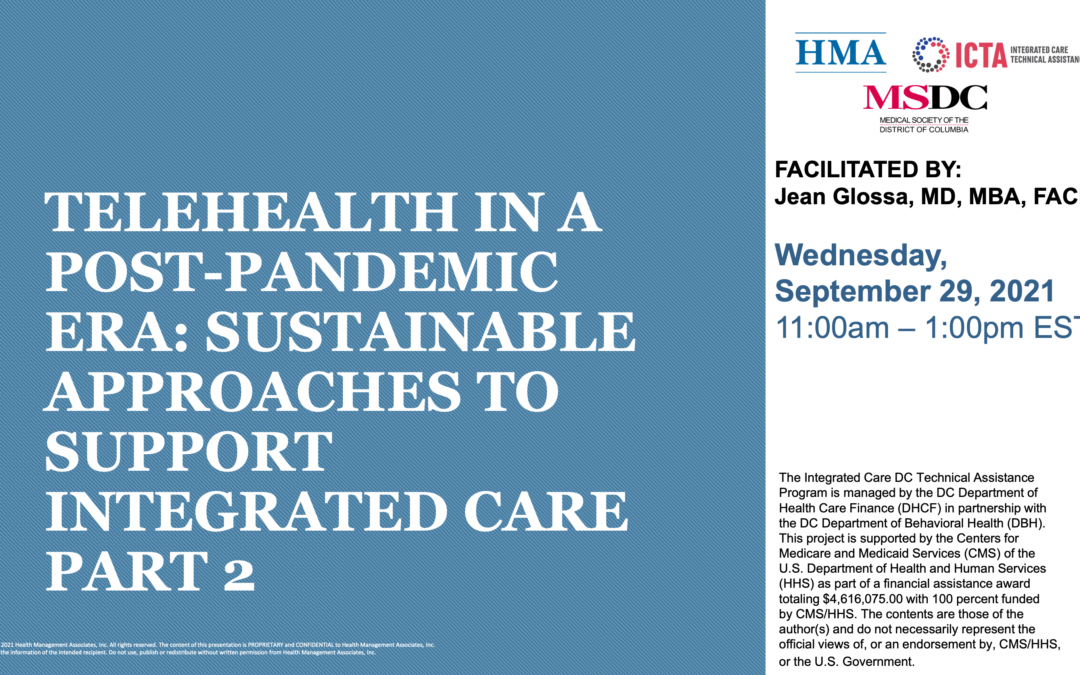
Telehealth in a Post-Pandemic Era Sustainable Approaches to Support Integrated Care – Part 2
This interactive virtual workshop is part two of a two-part series to support providers ongoing efforts to implement and sustain innovative models of telehealth following the COVID-19 public health emergency. Topics include best practices to support behavioral health care delivery through telehealth; improving patient engagement through telehealth and DC telehealth policy and priority updates.Medicine and Grief During the COVID-19 Era The Art of Losing
Half of Health Workers Report Burnout Amid COVID-19
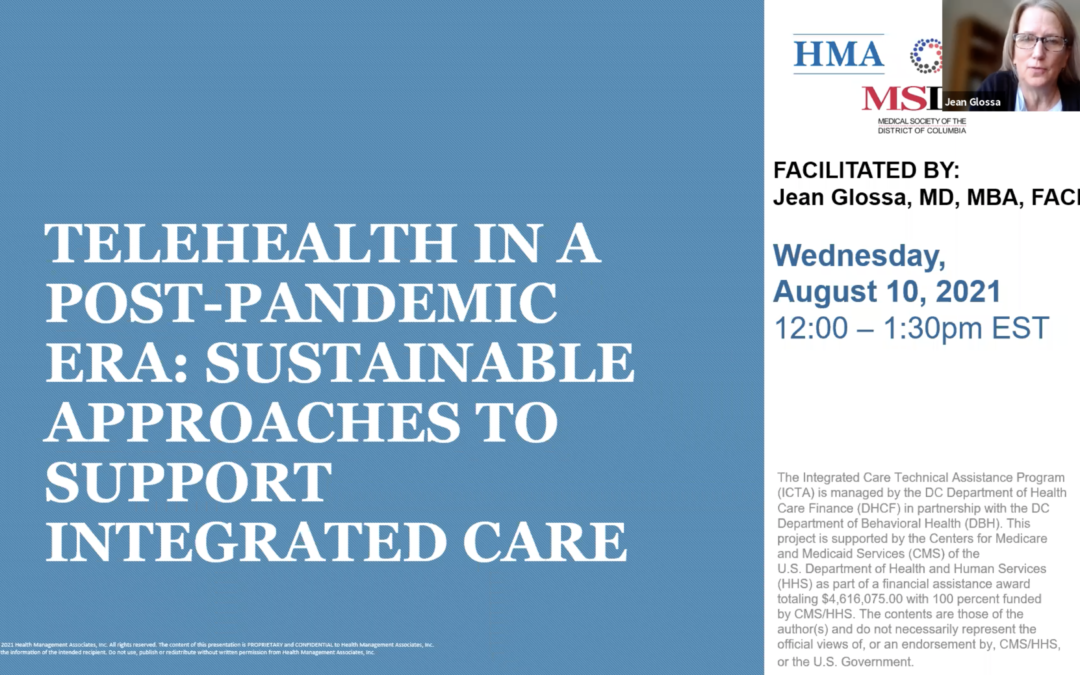
Telehealth in a Post-Pandemic Era: Sustainable Approaches to Support Integrated Care – Part 1
https://www.integratedcaredc.com/wp-content/uploads/2021/08/Webinar-Telehealth-in-a-Post-Pandemic-Era-Sustainable-Approaches-to-Support-Integrated-Care.mp4 Webinar This interactive virtual workshop is part one of a two-part series to support providers ongoing efforts...Association of Cannabis Use During Adolescence With Neurodevelopment
Results suggest that cannabis use during adolescence is associated with altered neurodevelopment, particularly in cortices rich in cannabinoid 1 receptors and undergoing the greatest age-related thickness change in middle to late adolescence.TEAMcare An Integrated Multicondition Collaborative Care Program for Chronic Illnesses and Depression
Patients with poorly controlled diabetes, coronary heart disease, and depression have an increased risk of adverse outcomes. In a randomized, controlled trial, we tested an intervention designed to improve disease control outcomes for diabetes and/or heart disease and coexisting depression. Patients with one or more parameters of poor medical disease control (ie, HbA1c ≥8.5, or SBP >140, or LDL >130) and a Patient Health Questionnaire-9 (PHQ-9) ≥10 were randomized to the TEAMcare intervention or usual care (N = 214). This article will describe the TEAMcare health services model that has been shown to improve quality of care and medical and psychiatric outcomes.Using Disease Registries to Improve Your Practice Population’s Health
This webinar focuses on effective strategies for engaging justice-involved populations and ways to support individuals transitioning to communities. The speakers shared case studies to illustrate the ways that providers have managed transitions of care and supported people. This session is approved by the American Academy of Family Physicians for up to 1 AMA Level 1 CME credit.Physician Burnout
The health care environment—with its packed workdays, demanding pace, time pressures, and emotional intensity—can put physicians and other clinicians at high risk for burnout. Burnout is a long-term stress reaction marked by emotional exhaustion, depersonalization, and a lack of sense of personal accomplishment. In recent years, the rising prevalence of burnout among clinicians (over 50 percent in some studies) has led to questions on how it affects access to care, patient safety, and care quality. Burned-out doctors are more likely to leave practice, which reduces patients’ access to and continuity of care. Burnout can also threaten patient safety and care quality when depersonalization leads to poor interactions with patients and when burned-out physicians suffer from impaired attention, memory, and executive function.Principles of Adolescent Substance Use Disorder Treatment: A Research-Based Guide
“Recovery Speaks”: A Photovoice Intervention to Reduce Stigma Among Primary Care Providers
Preliminary findings are reported from a photovoice intervention, “Recovery Speaks, ”to reduce primary care provider stigma in regard to people with mental illness and addiction.Correlates of Patient-Centered Care Practices at U.S. Substance Use Disorder Clinics
Substance use disorder treatment professionals are paying increased attention to implementing patient-centered care. Understanding environmental and organizational factors associated with clinicians’ efforts to engage patients in clinical decision-making processes is essential for bringing patient-centered care to the addictions field. This study examined factors associated with patient-centered care practices in substance use disorder treatment.Stigma, Discrimination, Treatment Effectiveness, & Policy
Cannabis Use May be Associated with Suicidality in Young Adults
NIH study suggests a link between cannabis use and higher levels of suicidal ideation, plan, and attempt. An analysis of survey data from more than 280,000 young adults ages 18-35 showed that cannabis (marijuana) use was associated with increased risks of thoughts of...